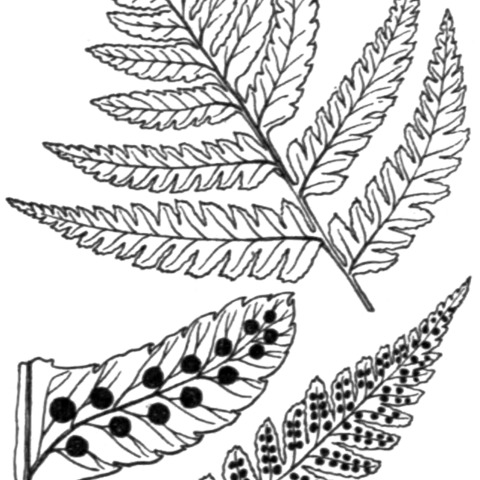Leaves dimorphic, 45--100 × 12--20 cm; fertile leaves dying back in winter; sterile leaves 1--several, smaller, green through winter. Petiole 1/4--1/3 length of leaf, scaly at least at base; scales scattered, tan, sometimes with dark brown center. Blade green, lanceolate, with nearly parallel sides, pinnate-pinnatifid, herbaceous, not glandular. Pinnae of fertile leaves twisted out of plane of blade but not fully perpendicular to it, narrowly elongate-deltate; basal pinnae narrowly elongate-deltate, much reduced; basal pinnules longer than or equal to adjacent pinnules, basal basiscopic pinnule and basal acroscopic pinnule equal; pinnule margins serrate or biserrate, with spiny teeth. Sori midway between midvein and margin of segments. Indusia lacking glands. 2 n = 246.

